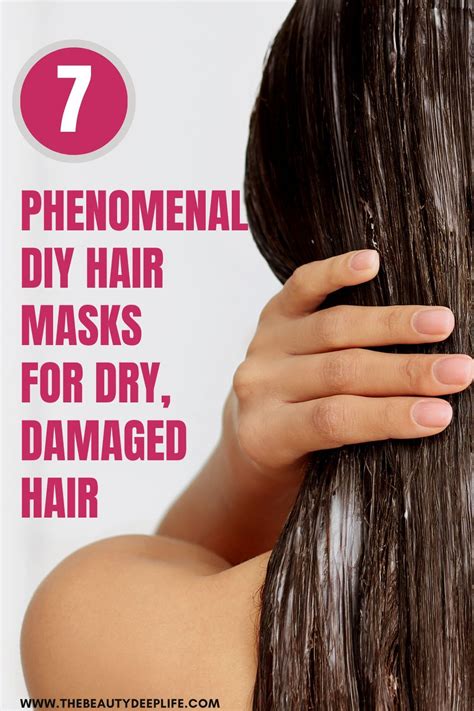The Plight of Dead Hair: Causes and Symptoms
Dead hair is a common problem that affects many people worldwide. According to the American Academy of Dermatology, over 45% of adults experience significant hair damage or loss at some point in their lives.

Dead hair can result from various factors, including:
- Heat styling
- Chemical treatments (e.g., hair dyes, bleaches)
- Environmental stressors (e.g., sun exposure, pollution)
- Nutritional deficiencies
- Hormonal imbalances
Symptoms of dead hair include:
- Brittleness
- Split ends
- Lack of shine
- Difficulty styling
- Increased hair fall
Reviving Dead Hair with a Film-Forming Mask
Film-forming hair masks are effective treatments for dead hair. These masks create a protective layer on the hair shaft, shielding it from further damage and promoting nourishment. They work by:
- Sealing in moisture
- Protecting from heat and environmental stressors
- Strengthening the hair shaft
- Improving shine and manageability
Types of Film-Forming Ingredients
Various ingredients can create a film-forming effect on hair. Some common ones include:
- Silicones: Form a hydrophobic layer that repels water and protects the hair.
- Oils: Natural oils, such as coconut, argan, and olive oil, penetrate the hair shaft and provide nourishment while forming a protective barrier.
- Butters: Shea butter, cocoa butter, and avocado butter provide intense hydration and create a protective film on the hair.
- Proteins: Hydrolyzed proteins, such as keratin and collagen, strengthen the hair shaft and create a film-like coating.
DIY Hair Mask Recipes for Dead Hair
Creating your own film-forming hair mask at home is easy and cost-effective. Here are two effective recipes:
1. Nourishing Coconut-Argan Oil Mask
- 2 tablespoons coconut oil
- 1 tablespoon argan oil
- 1 teaspoon honey
Combine all ingredients and warm slightly until they are well combined. Apply to dry hair and leave in for 20-30 minutes. Rinse thoroughly with warm water.
2. Strengthening Keratin-Protein Mask
- 1/2 cup yogurt
- 1/4 cup hydrolyzed keratin protein powder
- 1 tablespoon honey
- 1 tablespoon olive oil
Blend all ingredients until smooth. Apply to wet hair and leave in for 30-45 minutes. Rinse thoroughly with warm water.
Effective Strategies for Using Film-Forming Hair Masks
- Apply masks regularly (1-2 times per week) for optimal results.
- Use lukewarm water to rinse the mask, as hot water can damage hair.
- Leave masks in for the recommended amount of time, as over-conditioning can lead to build-up.
- Follow up with a conditioner to enhance moisture retention.
- Avoid using masks too frequently, as it can weigh down hair.
Benefits of Film-Forming Hair Masks
Regular use of film-forming hair masks offers several benefits for dead hair:
- Restores moisture and hydration
- Prevents damage from heat and environmental stressors
- Reduces breakage and split ends
- Enhances shine and manageability
- Strengthens the hair shaft
- Promotes hair growth
Conclusion
Dead hair can be frustrating, but it can be effectively revived and restored to health with the help of film-forming hair masks. By creating a protective layer on the hair shaft, these masks help seal in moisture, shield from damage, and nourish the hair. Regular use of hair masks can transform dead, dull hair into vibrant, healthy locks.
Additional Tips for Healthy Hair
- Use a heat protectant spray before styling with heat tools.
- Avoid over-brushing your hair, as it can cause breakage.
- Trim split ends regularly to prevent them from traveling up the hair shaft.
- Maintain a healthy diet rich in vitamins and minerals essential for hair growth.
- Manage stress levels, as stress can contribute to hair loss and damage.
- Consider taking biotin supplements to support hair health.
Table 1: Benefits of Film-Forming Hair Masks for Dead Hair
| Benefit | Description |
|---|---|
| Restores moisture | Protects hair from dryness and dehydration |
| Prevents damage | Shields hair from heat and environmental stressors |
| Reduces breakage | Strengthens hair shafts and prevents split ends |
| Enhances shine | Creates a reflective surface on hair, improving its appearance |
| Promotes hair growth | Nourishes hair follicles and supports healthy hair growth |
Table 2: Effective Strategies for Using Film-Forming Hair Masks
| Strategy | Description |
|---|---|
| Regular use | Apply masks weekly or bi-weekly for optimal results |
| Leave-in time | Follow instructions for each mask, avoiding overconditioning |
| Water temperature | Use lukewarm water to rinse, as hot water can damage hair |
| Conditioner | Follow up with a conditioner to enhance moisture retention |
| Frequency | Avoid excessive use, as it can weigh down hair |
Table 3: Benefits and Drawbacks of Different Film-Forming Ingredients
| Ingredient | Benefits | Drawbacks |
|---|---|---|
| Silicones | Hydrophobic layer that repels water | Can build up on hair over time |
| Oils | Natural nourishment and protection | Can weigh down hair if used excessively |
| Butters | Intense hydration and protective film | May be difficult to remove from hair |
| Proteins | Strengthen hair shaft and create a film-like coating | Can cause allergic reactions in some individuals |
Table 4: DIY Hair Mask Recipes for Dead Hair
| Recipe | Ingredients | Benefits |
|---|---|---|
| Nourishing Coconut-Argan Oil Mask | Coconut oil, argan oil, honey | Hydrates, protects, and nourishes |
| Strengthening Keratin-Protein Mask | Yogurt, hydrolyzed keratin protein, honey, olive oil | Strengthens, repairs, and promotes hair growth |
